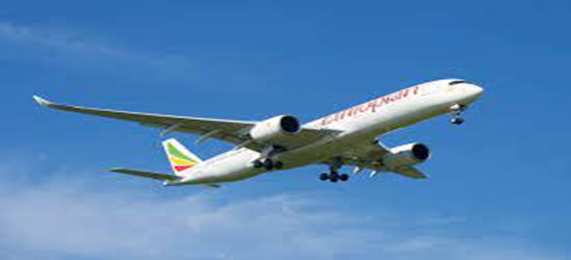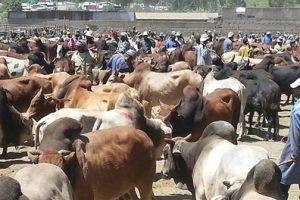
Ethiopia is set to redefine the future of air travel in Africa with its ambitious $7.8 billion Bishoftu Airport Hub. Ethiopian Airlines Group, Africa’s largest and most profitable airline, has unveiled plans for the new airport as it moves to alleviate mounting congestion at Addis Ababa’s Bole International Airport. The project, formally announced on March 15, 2025, is a landmark initiative that aims to cement Ethiopia’s role as a major aviation hub on the continent.
Bole International Airport, currently handling around 17 million passengers annually, has reached its capacity limits due to surging demand. Ethiopian Airlines’ exponential growth, bolstered by its extensive African and global network, necessitates an expansion that can accommodate the increasing flow of passengers and cargo. The new Bishoftu hub is projected to have a capacity of over 60 million passengers per year by 2040, effectively tripling Ethiopia’s aviation capacity.
The airport’s location in Bishoftu, approximately 40 km southeast of Addis Ababa, was strategically chosen for its accessibility and potential for infrastructure expansion. With air travel in Africa witnessing rapid growth, the new airport is expected to strengthen Ethiopia’s position as a key transit hub connecting Africa, the Middle East, Europe, and Asia.
Ethiopian Airlines Group signed a preliminary agreement with the African Development Bank (AfDB) on March 14, 2025, solidifying AfDB’s role in financing the mega project. Ethiopian Airlines CEO Mesfin Tasew and AfDB Vice President Nnenna Nwabufo led the discussions, which were concluded in the presence of AfDB President Akinwumi Adesina and Ethiopia’s Finance Minister Ahmed Shide.
AfDB has been a crucial partner in Ethiopia’s economic development, with a current portfolio investment exceeding $1.2 billion across key sectors. The bank’s commitment to supporting the Bishoftu airport project underscores its strategic importance for Africa’s transportation and trade development. Adesina described the initiative as an “African flagship project” that aligns with Ethiopia’s broader economic transformation.
The Bishoftu Airport Hub is expected to drive significant economic benefits beyond just aviation. By positioning Ethiopia as a leading travel and logistics center, the project will create thousands of direct and indirect jobs in construction, operations, and related services.
Minister Ahmed Shide emphasized the airport’s role in Ethiopia’s macroeconomic reform strategy under Prime Minister Abiy Ahmed, which has targeted increased investment in critical infrastructure to drive inclusive growth. Ethiopia’s economy has been expanding at a strong pace, with an 8.1% GDP growth recorded in the past year. The new airport will complement the country’s efforts to attract foreign direct investment (FDI) and boost the tourism sector, which has long been a priority for economic diversification.
Ethiopia’s rich cultural heritage, historical landmarks, and scenic landscapes have been gaining global attention, but inadequate airport infrastructure has hindered its full potential.
Not only these, Ethiopia has abundant natural resources which can attract foreign and local investment including mines, surface and under- ground water sources, arable lands with various ecological landscapes but due to less promotional and advertising work the resources are still not yet tapped in a proper manner. It is expected that the expansion of the aviation industry will bridge the gap witnessed in these regard.
The Bishoftu Airport is expected to enhance Ethiopia’s tourism appeal by facilitating greater international arrivals and improving air connectivity across Africa and beyond.
Bishoftu, a city already known for its natural attractions and military training centers, is set for a dramatic transformation with the development of this world-class airport. The projects will likely trigger further urbanization, infrastructure upgrades, and investment inflows, making Bishoftu a key economic and logistical center for Ethiopia.
The town is located adjacent to the Ethio-Djibouti rail way stretched, and the Addis Adama- road is pass through were import and export products are transported. There are also vast modern farms which produce flowers and vegetables located from Mojo up to Zway town located in the fringe of the eastern rift valley area. Therefore, the opening of large airport in Bishoftu can accelerate transporting exported goods to the outside market.
The establishment of the airport also laid ground to the flourishing of service sectors including hotels, restaurants and resorts found in the nearby lakes which boost tourism. These again enhance the town’s economy employment capacity by creating job opportunities for thousands.
The already established industrial parks also can use the air transport to import inputs which advances their production and productivity.
Ethiopian Airlines, consistently recognized for its efficiency and strategic foresight, has played a leading role in making Addis Ababa a central hub for African aviation. The new airport represents the next phase of this vision, ensuring that Ethiopia remains a dominant force in the global airline industry.
While the Bishoftu Airport project promises vast opportunities, it also presents challenges. Securing the full financing for the $7.8 billion development will require continued negotiations with international financial institutions, investors, and possibly public-private partnerships. Land acquisition, environmental concerns, and social impacts on local communities will also need to be carefully managed to ensure smooth execution.
Furthermore, Ethiopia’s ongoing economic reforms and political stability will be crucial in maintaining investors’ confidence and ensuring timely project completion.
The recent introduction of a new money exchange rate governed by market forces, which is supply and demand, already enabled to raise the hard currency reserve in banks and shore up shortages. The inflow of remittance from diaspora Ethiopians has been increasing from time to time. The opening up of private Forex bureaus further increases the availability of currency in the market. These are all developments that enhance foreign investor’s confidence on the growing economy. The building of the new Airport also can serve as a milestone to show how bright future is a headed to the aviation industry here.
Ethiopia’s new Bishoftu Airport Hub is more than just an infrastructure project—it is a bold statement of the country’s vision for the future. By 2040, Ethiopia aims to stand at the forefront of African aviation, providing seamless connectivity between continents and strengthening its economy in the process.
With AfDB’s backing, government commitment, and Ethiopian Airlines’ operational excellence, the Bishoftu Airport is poised to become a game-changer for Ethiopia and Africa’s aviation landscape. As the project unfolds, it will be closely watched as a model for large-scale infrastructure development on the continent, setting new benchmarks for efficiency, connectivity, and economic impact.
The Ethiopian airline is currently engaged in lucrative business and has been a major foreign currency earner compared to the other sectors. It engaged in transporting international passengers and cargo all over the world. It also plays vital role in boosting tourism through transporting to and from the tourist destination sites.
In the previous fiscal year, Ethiopian Airlines successfully launched flights to five international destinations. The CEO also revealed that the new destinations for the 2024 fiscal year will include Amsterdam, Monrovia, Liberia, Port Sudan and Dhaka, Bangladesh among others.
According to Mesfin Tassew, CEO of the Ethiopian Airlines Group, the newly introduced aviation policy is very good and the airline supports the objectives. It enables other aviation operators to expand their business here. Ethiopia has a large population and once the economy grows, many more aviators will be needed. There are 22 asphalt airport facilities in Ethiopia. Currently, “we are planning to finalize the development of five more airports in the coming two years. So it will reach 27. This is big for a country in Africa,” said Mesfin.
Currently, Ethiopian Airlines has deployed 32 aircraft (Q400) for the domestic service. If other airlines join the domestic market in Ethiopia, it will have a good impact. Of course, they will have a certain portion of our market. But since the market will grow, we all have fare said Mesfin.
Ethiopian Airlines’ biggest target is the international market. It considers domestic service a national duty. Usually, the domestic market generates a loss, not a profit. It fetches a profit only sometimes. “So we have no opposition if other airlines come to service the domestic aviation market. We do not see them as a threat. We are ready to support them. If domestic aviation grows, the economy grows.”
BY ABEBE WOLDEGIORGIS
THE ETHIOPIAN HERALD SUNDAY EDITION 23 MARCH 2025





